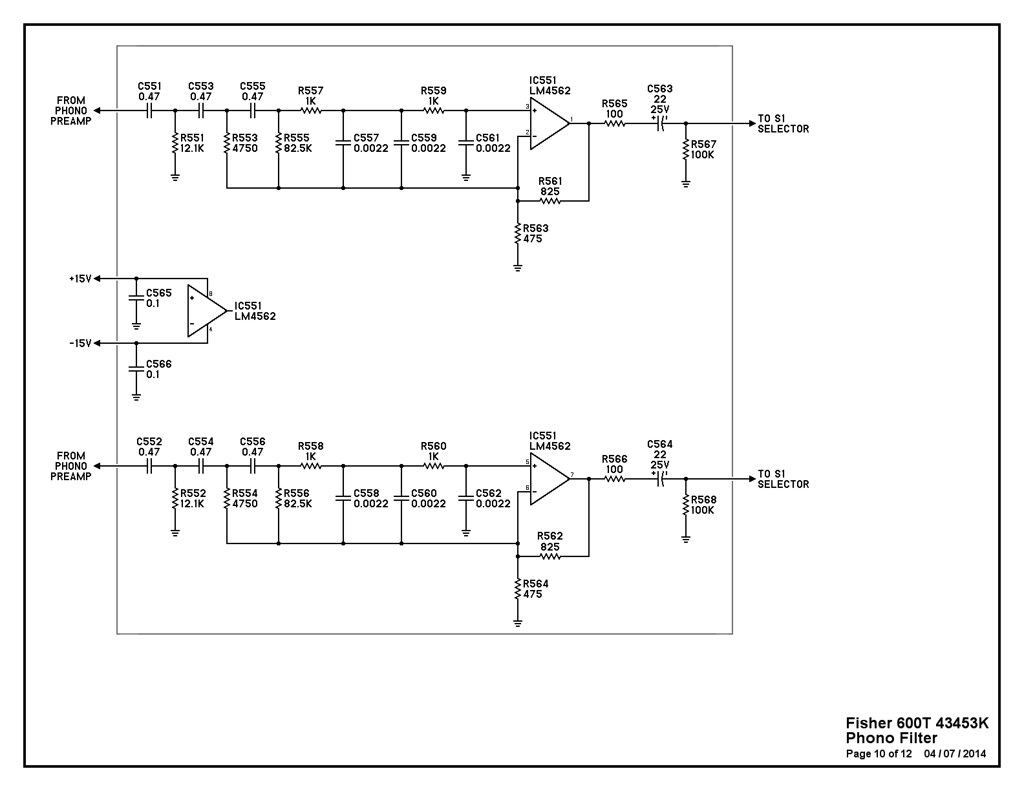The permanent LF filter was always cited in the literature of the day as being present to minimize any signal generated from record warp, and the thump generated as an FM tuner was tuned in and out of a carrier signal. The permanent filter and the switchable filter actually work together in the first line amplifier stage (whether the switchable filter is on or off) to form a two pole filter that is much sharper (12 db/ octave) than what a single pole filter produces (6 db/octave). The output of the LF filter stage is taken between the two poles, so that when the switchable filter portion is turned off (more realistically, effectively made benign in the circuit), the permanent portion still operates as a 12 db/octave filter, but primarily as a garbage screen (only effective below 20 Hz) to deal with the warp and thump issues mentioned above.
When the switchable portion is turned on, then the effective filtering moves well up into the audible range, to deal with potential console acoustic feedback, noisy changer mechanics, boomy speakers, etc.
Of note, it appears that Fisher first used a Rumble Filter that was part of the RIAA preamp circuit in their earliest stereo models (think original X-101ST), but dropped it in favor of the scheme noted above in later units (X-202 and beyond). Interestingly however, the President preamp (400CX-2 for consoles) revives the old RIAA rumble filter circuit -- as a permanently activate filter -- used in addition to the later LF filter feature mentioned above, so it gets a double whammy filter. This may have been to reign in some wicked console feedback due to the better LF capability of the President's power amplifiers.
Dave


